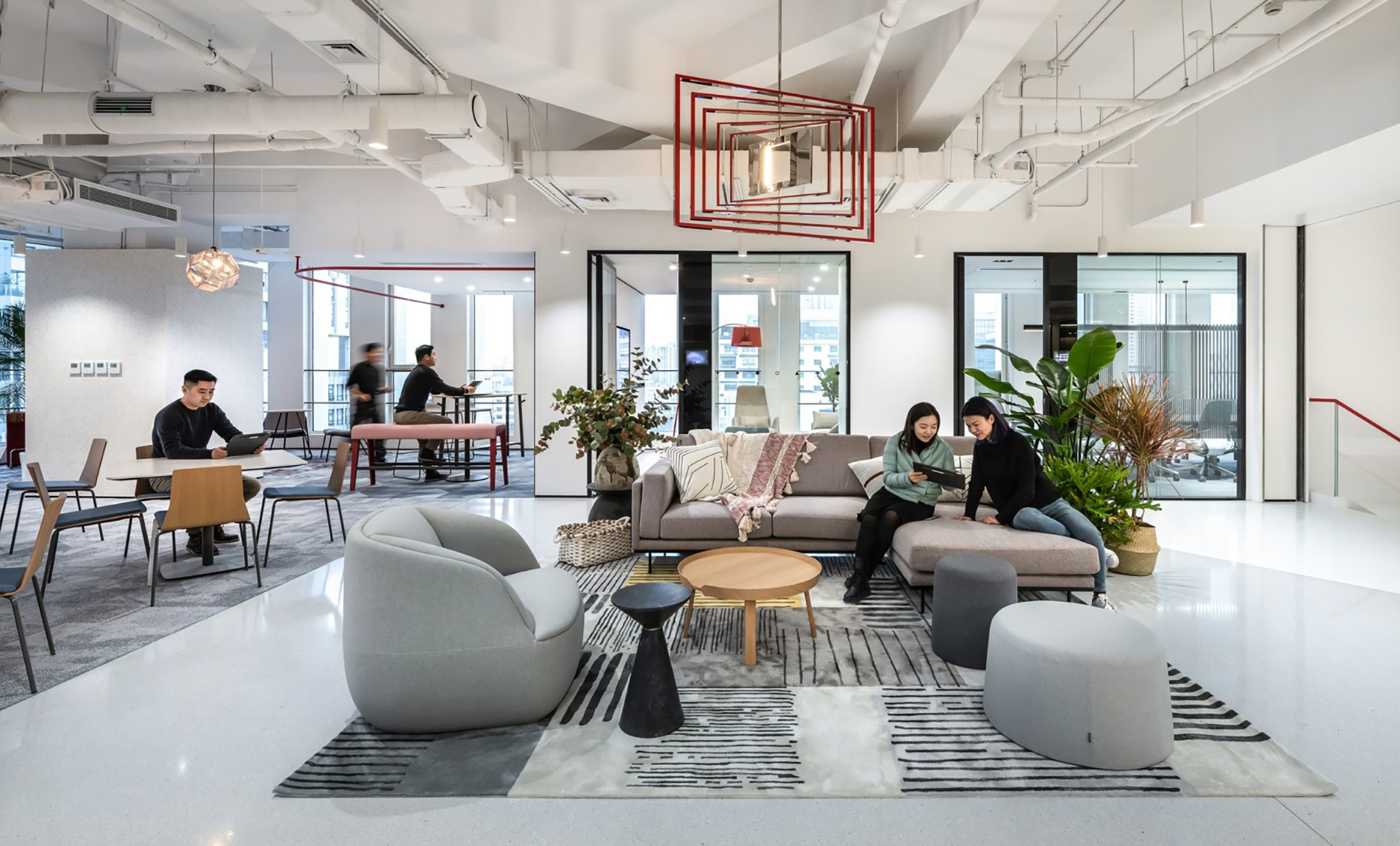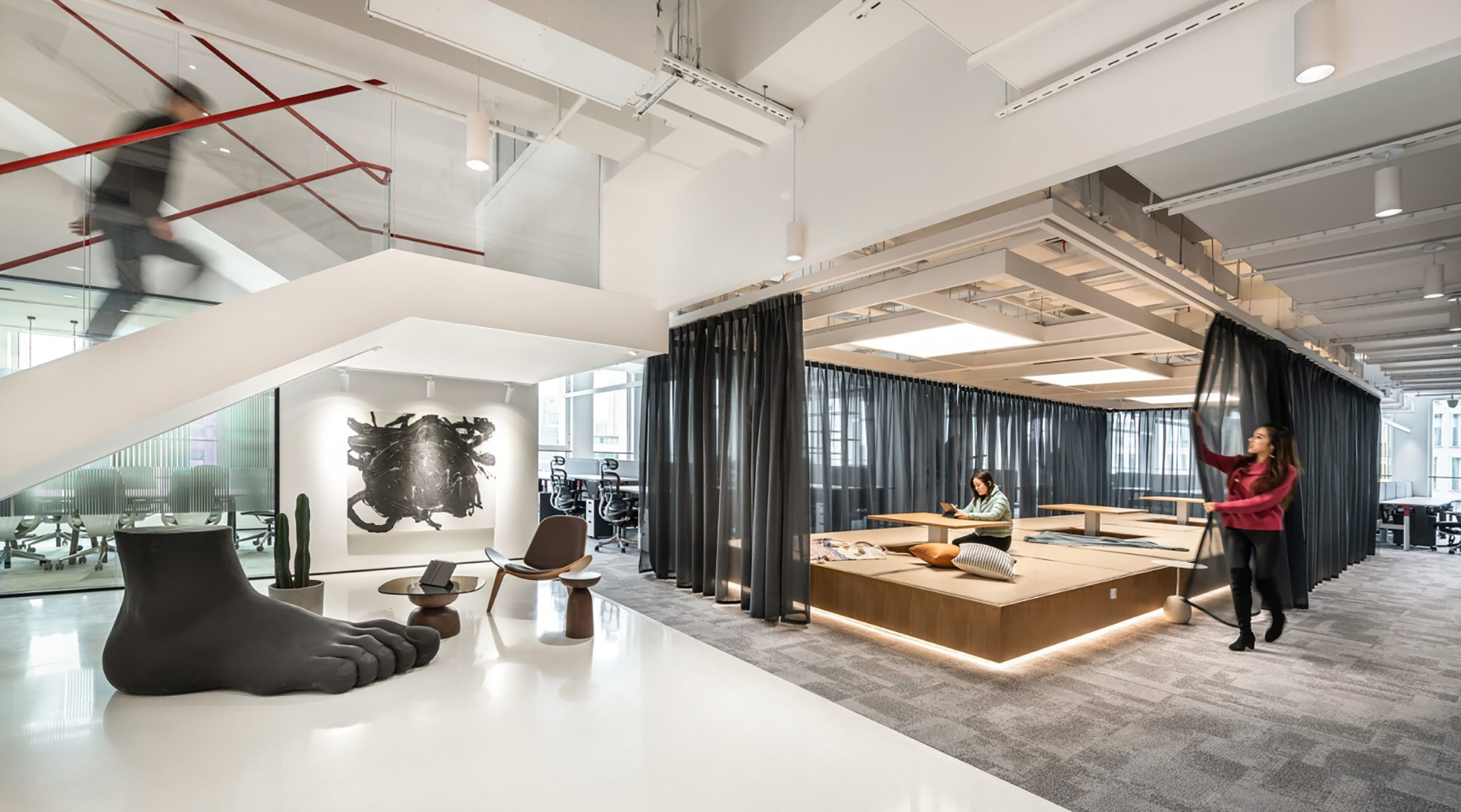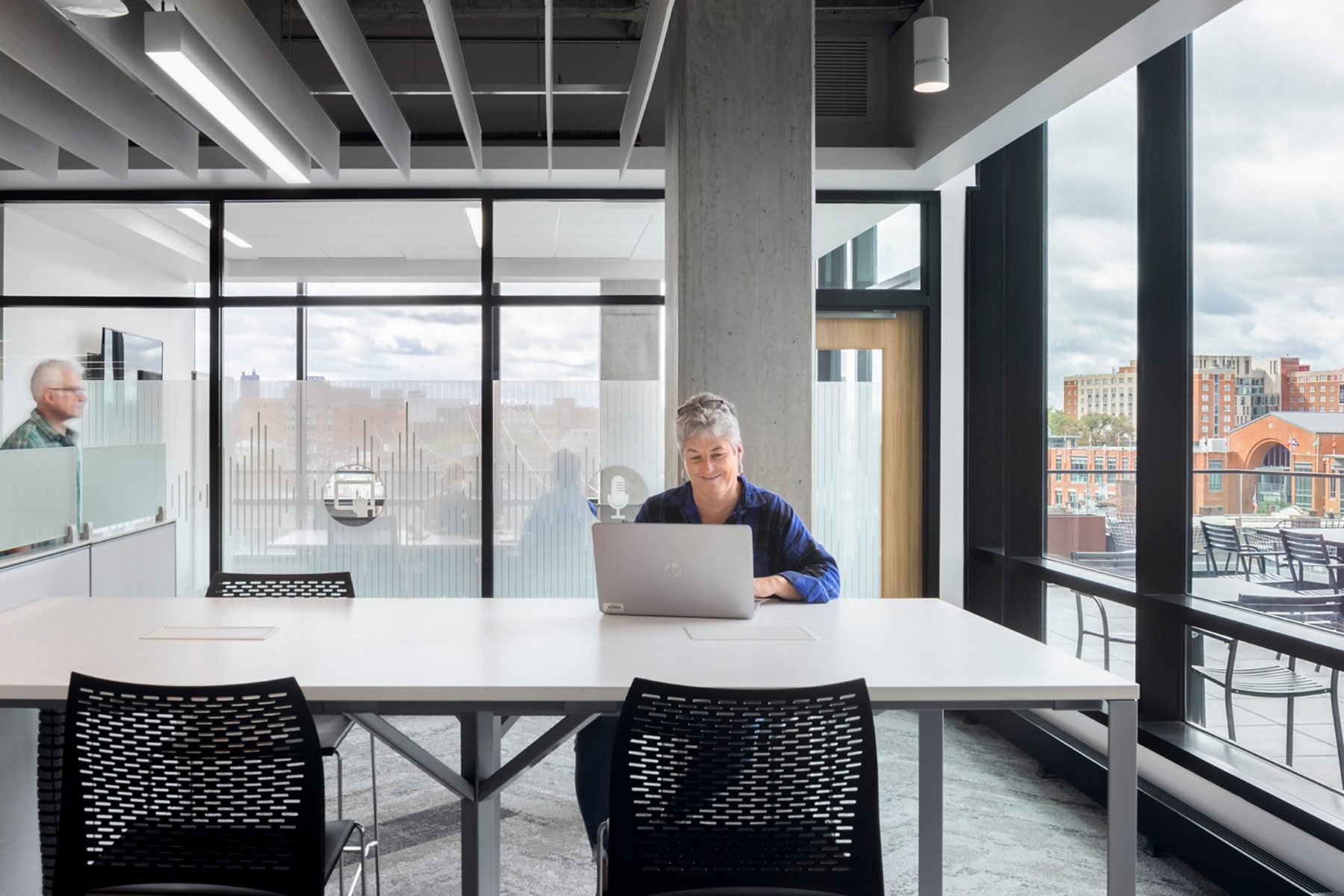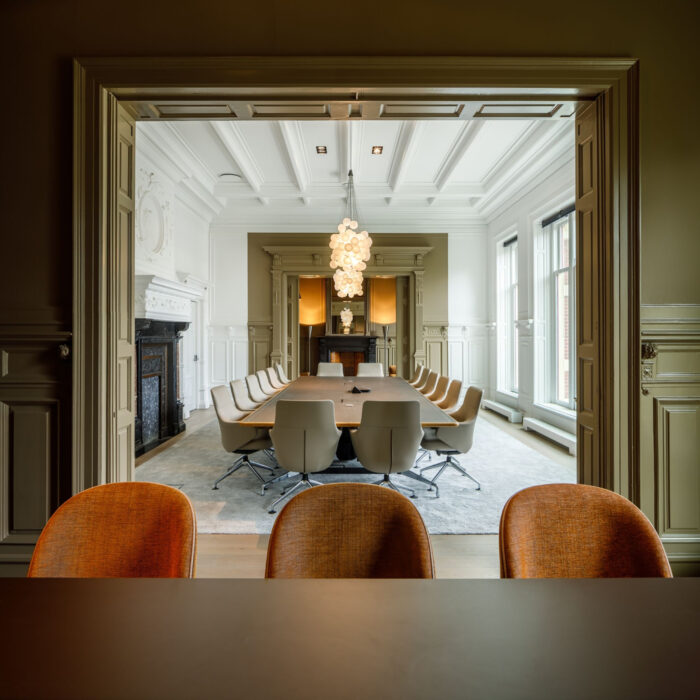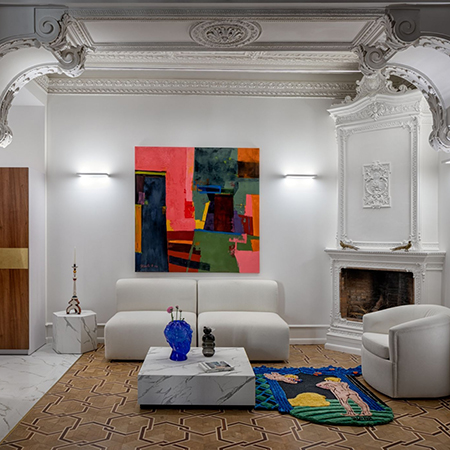The flexible office
The report was recently presented The New Habitat, an extensive study on housing trends both in housing and in contract, offices and retail. In this annual study, promoted by ape group and carried out with the consultant Futurea, they have participated 400 professionals, captured through the collaboration of Casa Decor, the General Council of Official Colleges of Decorators and Interior Designers, the College of Interior Designers of the Valencian Community, the Fundació del Disseny of the Valencian Community and Strabe. Next, we summarize the part dedicated to the trends in work environments, that can give us very interesting clues as to where the offices of the future
The emergence of Artificial Intelligence (AI)
In recent months, concern has grown over the rapid advance of the Artificial Intelligence and the possible massive disappearance of jobs, around 97 million in 2025, according to the World Economic Forum. Thus, the jobs of the future will be those that machines cannot do, and creativity and ingenuity will be two fundamental qualities to make sense of AI as a work tool. For this reason, the talent attraction will be essential and the office will become a tool and a complaint to attract new generations of workers to the offices.
change of priorities
After COVID, the incorporation to work has been uneven and very random, resulting in a hybrid formula. Some 84% of workers in the United States are more satisfied with this formula, so it is inevitable that, as the number of hybrid workers increases, companies will change the role of the office as it is no longer the meeting place of the work week.
We have already spoken on several occasions about how a good office design It encourages people to be more proactive in collective spaces than in individual ones. For this reason, in a few years, the percentages will have been reversed: there will be 30% of spaces for individual use (now it is 70%) and a 70% to collaborative zones or common (now it is at 30%).
Flexible and multipurpose spaces
Open design concepts, with flexible work areas and cozy rest areas, encourage interaction and communication. With special attention to well-being and ergonomics, the outer office becomes an innovative workspace, fostering collaboration, creativity and employee well-being.
Workers value that the design of the office improves their personal well-being, preferring the spaces with vegetation and access to the open air, as well as those with places for rest and meditation. That is why modern offices strive to regroup work functions, organizing them from flexible and versatile solutions and with spaces that are not focused solely on work, but that turn the office into a place to carry out activities focused on personal well-being.
Multigenerational workspaces
La longevity and delayed retirement age They are encouraging three or more generations of workers to coincide in offices. For this reason, work environments must be designed to take into account the specific needs and expectations of such a diverse workforce. Recognizing the talent and experience of the elderly can be a way of coping in times of crisis, as well as taking advantage of their wisdom to train younger workers in resilience and social skills.
This new configuration of society will change the current and future way of working of the active population. In this decade alone, most EU countries will see the proportion of older workers up to 55% of its total workforce (source: International Labor Organization). Increased longevity and decreased fertility will significantly reduce the proportion of the population at traditional working ages, but will also allow people to work and contribute to society for much longer.
In the new world of work, the ability to create companies around a multigenerational workforce that recognizes the value and contribution of workers of all ages will be crucial for businesses to be prosperous and resilient.
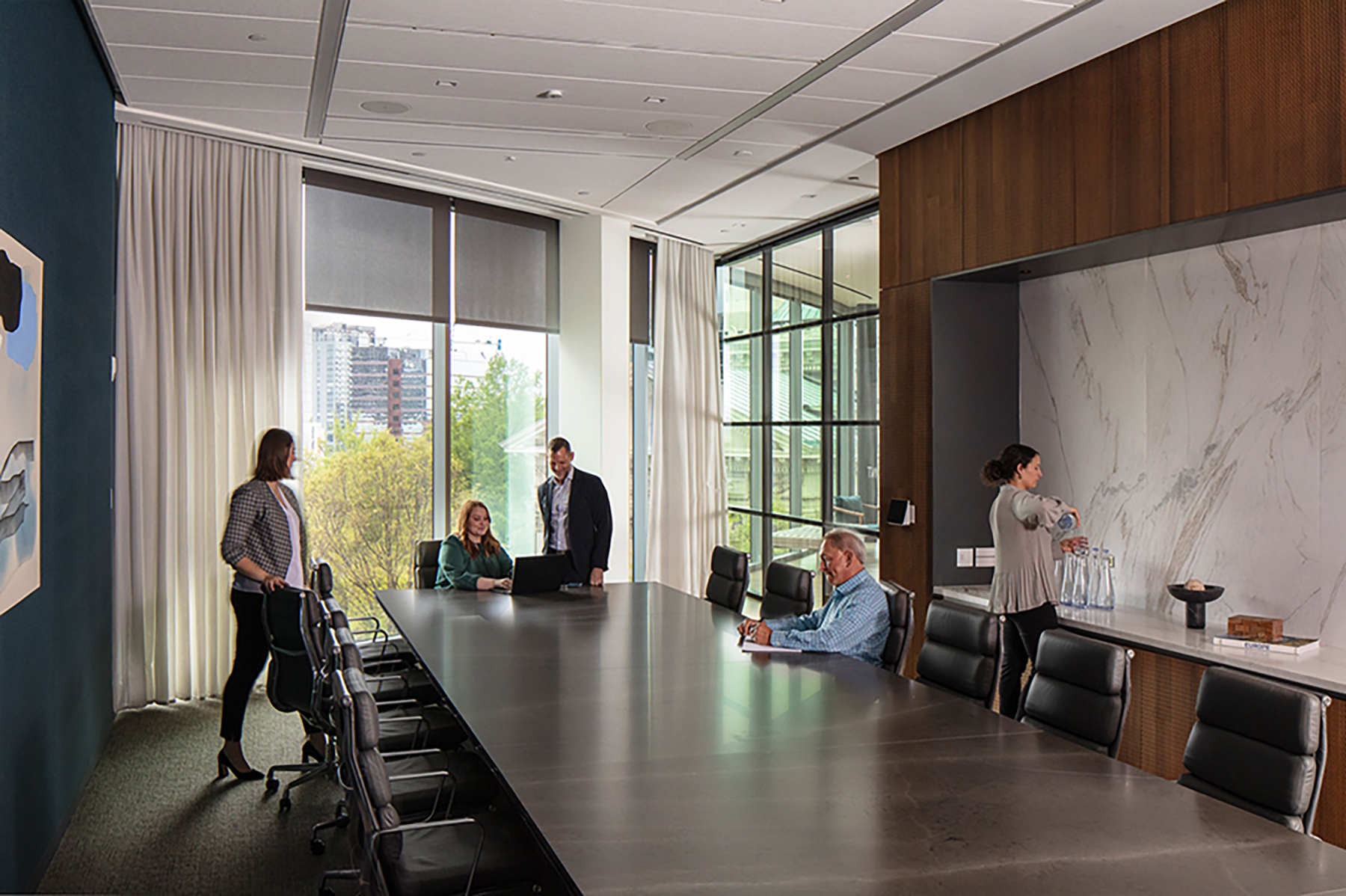
It will be necessary to offer a mix between public and private spaces
While millennials and Gen Z tend to prefer more informal office settings, older generation workers are used to private workspaces and hold short meetings. Offering flexible work structures so that they can be reorganized in a few steps will be essential to be able to keep all workers happy and allow work to be more fluid.
Solid colors and designs
Highly contrasting colored floors and walls and ornate patterns can trick the eye into perceiving obstacles nonexistent. If older people think they see a step or hole in the floor, they may trip or fall. The light colored floors without drawings they are easier to see clearly.
Conscious Enlightenment
Older workers may have vision problems that make it difficult for them to see in low light conditions. Have a combination of natural light and artificial light and spaces with warm and cold light regulators are two of the keys to solving these problems.
More comfortable and durable seats
La variable height of the seats, the robust armrests and the ergonomic support they make older people feel more comfortable, although it is something that benefits everyone. Seating in offices should ensure that people can sit down and get up more easily, even if they have limited mobility.
In the next post, we will summarize two other macro trends from The New Habitat study.
Photos: OfficesSnapShot

